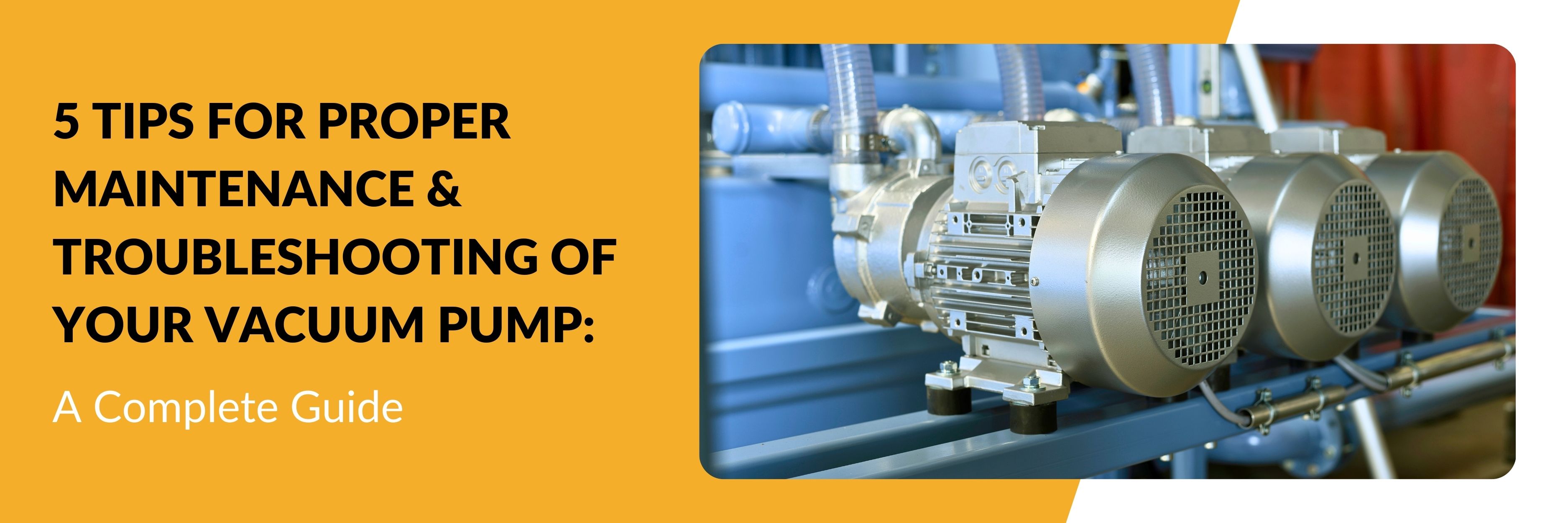
Vacuum pumps are essential in many industries, and proper maintenance and troubleshooting is key to keeping them running smoothly. Rotary vane vacuum pumps are particularly useful for their ability to maintain a certain level of vacuum pressure, making them ideal for many applications. However, they require regular maintenance and troubleshooting in order to ensure that they are functioning properly. In this article, we will provide some tips on how to properly maintain and troubleshoot your rotary vane vacuum pump. We will discuss how to identify common problems with the pump, as well as how to perform routine maintenance tasks such as lubricating the vanes or changing the oil filter. Finally, we will provide some advice on when it is best to call a professional technician for help with more complex issues.
1. Check the oil level regularly
Regularly check the oil level of your vacuum pump to make sure it has enough oil to keep the pump running properly. If the oil level is too low, add more oil as needed. Check out this article on how to change your vacuum pump oil: https://fluidxinc.com/blog/how-to-change-vacuum-p...
2. Change the oil & filters regularly
Changing the oil in your vacuum pump helps to keep the pump running in top condition and reduces wear on the internal components. So, when do I change my vacuum pump oil?
- After a 100-hour break-in period of pump operation.
- When the pump fluid becomes contaminated or is(and/or) discolored.
- When condensation in the pump fluid is present.
- Before and after the pump has been stored for a long period of time.
- When the vacuum pump level is significantly higher than the rated blankoff vacuum. This is best tested with a high vacuum gauge mounted directly on the inlet port.
- When the vacuum pump is not reaching the desired vacuum level. This is best tested with a vacuum gauge placed directly on the pump.
- Depending on your oil type, application and possible contaminants, the frequency of oil changes can range anywhere from daily to yearly. and set a frequency which could be from daily to yearly depending on the oil type, and application.
3. Regularly inspect and clean your vacuum pump
This includes checking for signs of wear, tear, and potential damage, as well as cleaning the interior and exterior of the machine. Ensure that all components are properly lubricated and that there are no blockages or obstructions in the system. One of the main ways to do an internal cleaning of particles and sludge build-up in mechanical pumps is using flushing fluid. Using FF Grade Flushing Fluid as part of your regular pump maintenance will ensure your vacuum pump is free of contaminants. The low viscosity helps free contamination from internal parts and discharge it through the drain valve. Check out this article on how to use flushing fluid: https://www.vacoil.com/blog/how-to-use-vacuum-pum...
4. Inspect the surrounding environment
Vacuum pumps require the right conditions to operate at peak performance. In some conditions, the pump has a greater chance of breaking down and creating a halt in operations. In order to optimize productivity, you should be aware of this.
The airflow around your pump can be critical to its performance. Are there any other contaminants in the area - vapors, solvents, acid - that could be of concern? If so, determine whether they are impacting your pump's integrity and performance.
Changing weather can also be an issue. If you're near an outside wall or running heat in the building, condensation can build up in your pump and create problems. The ambient temperature in the surrounding environment is essential.
5. Check the Vacuum Pump for Leaks
Before using your vacuum pump, you should check for any possible leaks. Inspect all connections, hoses, and seals for tightness, and check for any signs of cracks or damage. Eliminating leaks can prolong the life of your pump and improve the quality of work it produces.
